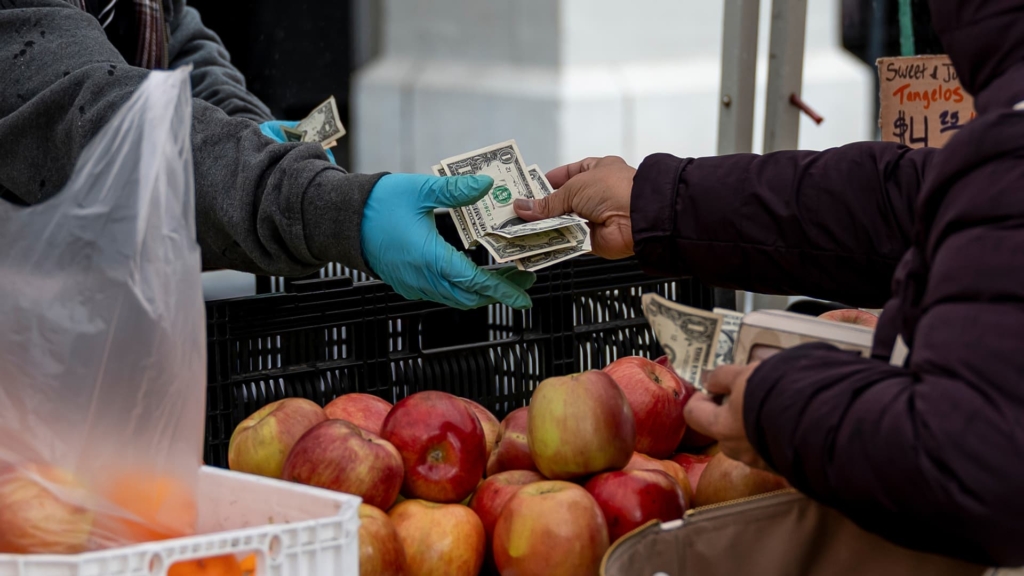The latest report from the Commerce Department indicates that the Federal Reserve’s primary inflation gauge rose unexpectedly in February, while consumer spending experienced a smaller increase than anticipated.
The core personal consumption expenditures price index recorded a month-over-month increase of 0.4%, marking the most significant gain since January 2024. This adjustment brings the annual inflation rate to 2.8%, surpassing economists’ predictions of 0.3% for the month and 2.7% for the annual rate, as noted in a survey by Dow Jones.
Core inflation, which omits the fluctuating prices of food and energy, is widely regarded as a more reliable indicator of underlying inflation tendencies.
Meanwhile, the all-items measure reflected a 0.3% rise from January, maintaining a 2.5% increase compared to the same period last year, aligning with analysts’ expectations.
Simultaneously, the Bureau of Economic Analysis reported that consumer spending grew by 0.4% in February, falling short of the predicted 0.5%. In contrast, personal income saw a more robust 0.8% rise, exceeding the anticipated 0.4% increase.
Following the release of the report, stock market futures and Treasury yields briefly dipped.
Federal Reserve officials prioritize the PCE inflation reading, viewing it as a comprehensive gauge that considers shifts in consumer behavior, while placing less emphasis on housing costs compared to the Labor Department’s consumer price index. Notably, shelter costs, which have been persistent contributors to inflation, increased by 0.3% in the PCE measure.
Ellen Zentner, chief economic strategist at Morgan Stanley Wealth Management, remarked, “It looks like a ‘wait-and-see’ Fed still has more waiting to do. Today’s higher-than-expected inflation reading wasn’t exceptionally hot, but it isn’t going to speed up the Fed’s timeline for cutting interest rates, especially given the uncertainty surrounding tariffs.”
Prices for goods increased by 0.2%, primarily driven by a 0.5% rise in recreational goods and vehicles, although gasoline prices fell by 0.8%, moderating the overall increase. Services prices also advanced by 0.4%.
Households are becoming increasingly cautious in their spending, as evidenced by a rise in the personal saving rate, which climbed to 4.6%, the highest rate since June 2024.
This report arrives at a time when markets are apprehensive about potential impacts of President Donald Trump’s tariff policies on inflation, especially as data begins to trend slowly towards the Fed’s 2% target.
After a full percentage point rate cut in 2024, the central bank has maintained its current rate through this year, with officials expressing growing concerns regarding the effect of import duties on pricing. While economists generally view tariffs as isolated incidents that do not contribute to prolonged inflation pressures, the extensive nature of Trump’s tariffs and the risk of a trade war complicate the outlook.
Correction: Consumer spending increased 0.4% in February. An earlier headline misstated the number.
Get Your Ticket to Pro LIVE
Join us at the New York Stock Exchange!
Uncertain markets? Gain an edge with Finance Newso Pro LIVE, an exclusive, inaugural event at the historic New York Stock Exchange.
In today’s dynamic financial landscape, access to expert insights is paramount. As a Finance Newso Pro subscriber, we invite you to join us for our first exclusive, in-person Finance Newso Pro LIVE event at the iconic NYSE on Thursday, June 12.
Join interactive Pro clinics led by our Pros Carter Worth, Dan Niles and Dan Ives, with a special edition of Pro Talks with Tom Lee. You’ll also get the opportunity to network with Finance Newso experts, talent and other Pro subscribers during an exciting cocktail hour on the legendary trading floor. Tickets are limited!


























